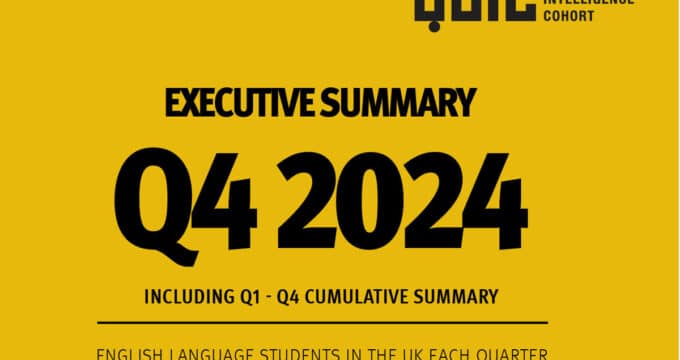What is the cost of policy intended to reduce international student flows?
- New immigration policies in Australia, Canada, and the UK affecting international students will lower net migration, but at what cost?
- Recent analyses of the economic impact of foreign students suggest that those leading destinations stand to lose billions of dollars because of the policy shifts
If you look at how the international education sector has been covered in the mainstream media this year, you’ll see that a good deal of attention has been paid to:
- The impact of international students on affordable housing supply and healthcare capacity;
- Debates about the wisdom of curbing inbound flows of new international students to lower net migration.
It is less common to see headlines about the cultural and economic value of international students. This is curious, given that when a government imposes greater restrictions on schools and universities’ ability to recruit overseas, it is courting:
- Tremendous revenue losses that may be felt not just in the education sector, but also across many additional industries (e.g., tourism, hospitality, and consumer goods). When Phil Honeywood listed the numerous contributions of international students to Australia , he made the point that these contributions include areas we sometimes don’t even consider. “Crucially,” he said, “[international students] buy new bedding when they arrive here.”
- A decline in competitive, scientific, and innovative potential. , for example, points to the US as an example of just how much international students can drive a national economy forward: “In 2018, there were 21 billion-dollar US startups with a founder that first came to the US as an international student … fast forward to 2022, and the number of billion-dollar startups with an international student founder has exploded to 143.”
How carefully have governments considered the impact of fewer international students?
As we speak, tens of thousands of prospective international students are changing their study abroad plans as a result of new immigration policies in Australia, Canada, France, and the UK – not to mention in some other European countries. The volume of new migrants entering those leading destinations will almost certainly decline – which is the stated goal of the policies. But at what cost?
Here's a roundup of recent assessments of international students’ contributions in Australia, Canada, and the UK.
Australia
An analysis by National Australia Bank (NAB) found that spending by international students accounted for . NAB economists write: “The 0.8 per cent boost helped Australia's economy avoid two consecutive quarters of negative economic growth – steering it away from a technical recession. But with student visa approvals falling, that contribution is expected to ease.”
Similarly, as reported in , Business Council of Australia chief executive Bran Black has warned of the potential damage a significant limit on international student numbers could inflict on the Australian economy. He wrote in the :
“We are playing with Australia’s fourth largest export at a time when our economy is on a knife’s edge. International students accounted for almost a quarter of all GDP [gross domestic product] growth over the year to March 2024. The sector was worth AUD$48 billion (US$32.4 billion) in 2023 and employed over 200,000 people. It’s 48 billion reasons to think twice before we cut too hard.”
According to high-level government sources informing an exclusive report published by the Australian Financial Review in early-August 2024, the government is planning to impose overseas enrolment caps for universities on 1 January 2025. Overseas enrolments are expected to be limited to 40% of universities’ total enrolments for two years. The enrolment cap would follow other immigration legislation that is already significantly dampening student demand for Australia.
Canada
Global Affairs Canada (GAC) has determined that the direct and indirect GDP contribution of international students was roughly – 1.2% of Canada’s GDP that year. In 2022, total spending by international students in Canada accounted for nearly a quarter (23%) of Canada’s total service exports to other countries.
Almost all this spending (97%) was by long-term international students, and much of it was by Indian students (who represent more than 4 in 10 international students in Canada). The has reported that Indian students from the Punjab region alone contributed about US$8 billion to the Canadian economy in 2023.
Indian students, and students in several other important emerging markets including Nigeria, have less incentive to apply to Canadian institutions in 2024 because of a new rule barring the spouses/partners of international students enrolled in colleges and undergraduate programmes from receiving an open work permit. This rule, on its own, could remove billions of dollars from the Canadian economy given the need of so many international students to receive financial support from their partners while in Canada, especially given limits on their ability to work while studying. In March 2024, only 4,210 study permits were granted to Indian students – an 85% drop compared with March 2023.
United Kingdom
In the UK, the economic benefit of international students was estimated at £41.9 billion in 2021/22, up from £31.3 billion in 2018/19. This net contribution even accounted for an estimated £4.4 billion impact on public services. International student enrolments in UK higher education institutions rose by 12% in 2022/23 (to 758,855), suggesting that the financial contribution of international students was higher still last year.
International student applications and enrolments have been falling since the government removed the right of international student dependants (with limited exceptions) to accompany students to the UK. In July, data revealed from July 2023 to July 2024. Mark Corbett, head of policy and networks at London Higher, said that if the trend holds all year, it could equate to almost a billion pounds in lost revenue in 2025.
In 2022/23, international students spent £11.8 billion in tuition fees at UK universities – . This year, the UK’s University and College Union (UCU) shared a list of 66 universities in financial distress in 2024 – a proportion that represents over a third of all universities in the UK.
Lest we forget the soft power importance of international students, the Higher Education Policy Institute’s has reported that in 2023, 58 countries (representing more than a quarter of all countries) were headed by a former alumnus of a UK university, and 65 were led by a someone educated in the US.
For additional background, please see:
- Join the (23 September 23 2024, London). A landmark one-day summit bringing together the industry's senior leaders, policy makers, and experts, all focused on shaping the future of the international education sector.
- “UK reports record foreign enrolment for 2022/23”
- “International enrolment declines pressuring UK universities this year with one in three facing significant financial challenges”
- “Canada’s Immigration Minister signals that changes are coming to post-study work rights”
- “US gains greater share of international student interest amid policy changes in competitor destinations”
- “Australia: Peak bodies lobby strongly against pending legislation during senate hearing”














